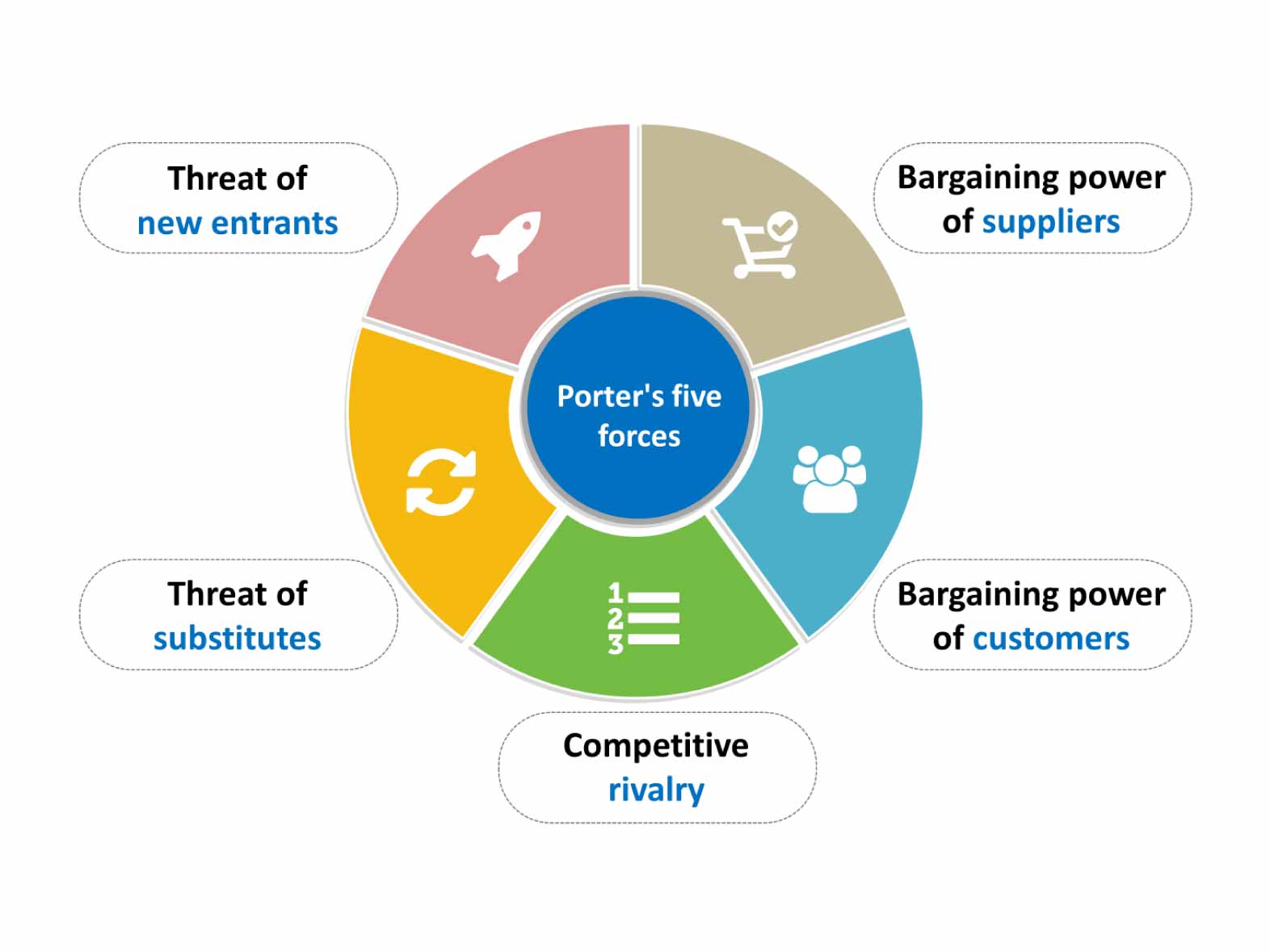Competition increases or decreases because of a lot of factors. Michael Porter listed them under the 5 broad factors –
- The threat of new potential entrants
- The threat of substitute product/services
- Bargaining power of suppliers
- Bargaining power of buyers
- Rivalry among current competitors
Let us delve into each of these factors in detail –
- The extent to which market entrants’ success is restricted by can be grouped as –
a. Economies of scale
b. Brand loyalty
c. Government Regulation
d. Customer Switching Costs
e. Absolute Cost Advantage
f. Ease in distribution
g. Strong Capital base - Competition for market share among already placed companies depends on –
a. Extent of exit barriers
b. Amount of fixed cost
c. Competitive structure of industry
d. Presence of global customers
e. Absence of switching costs
f. Growth Rate of industry
g. Demand conditions - Buyers often become powerful as they hold full knowledge of the market, they have options and a lot of other factors come into play that can lead to a company losing sales/market share.
- Suppliers often tend to regulate the production or quality provided they have other business willing to purchase their product/services by say for example highering or lowering costs (if they enter into a diff more profitable agreement with some other competition) and providing discounts to specific buyers.
- Substitute products pose an immense threat to existing products. They can put a hold on the sale of a certain product/service. Maruti Suzuki 800 and TATA Sumo is responsible for the loss of Ambassador’s market share thereby reducing it to zero.
